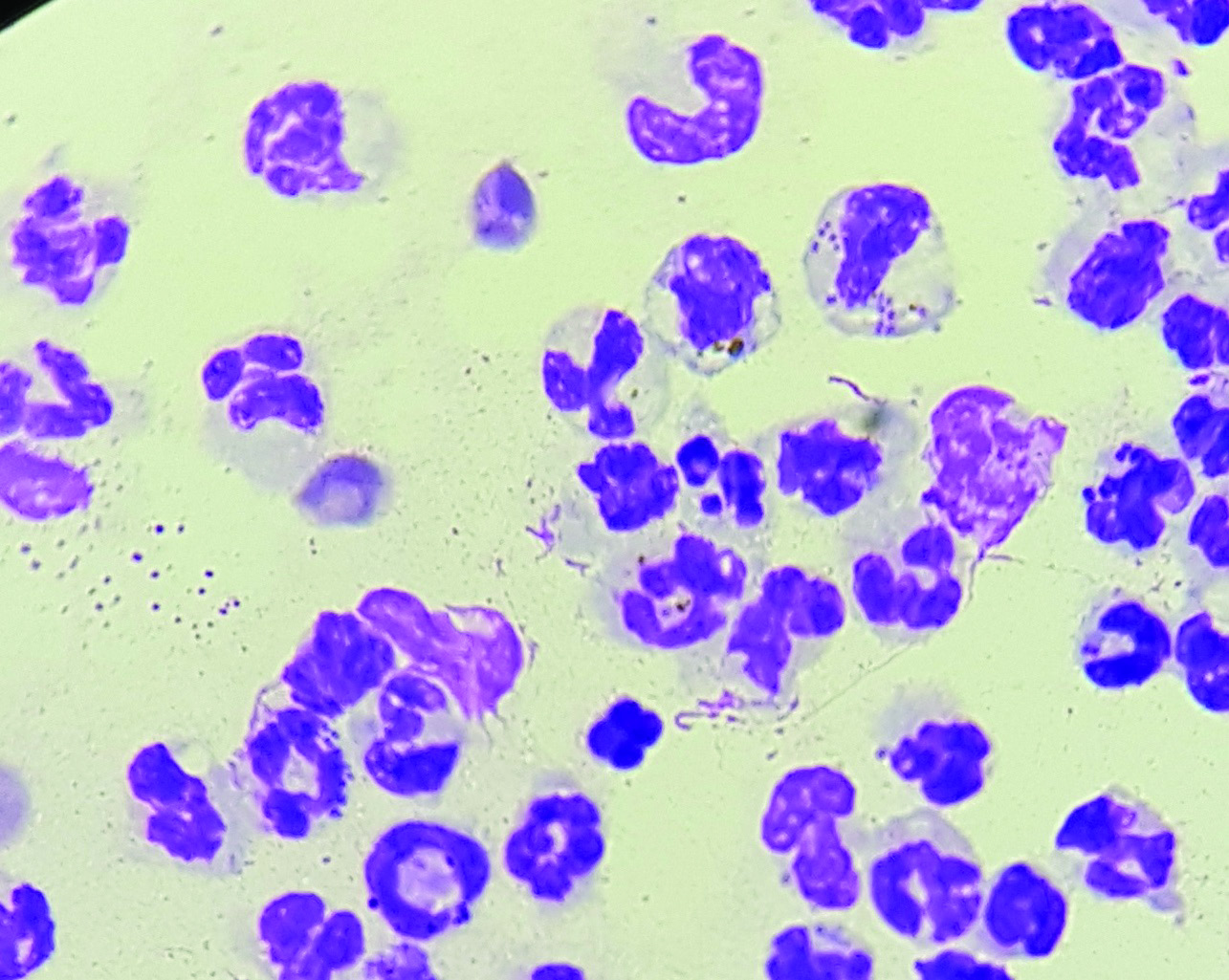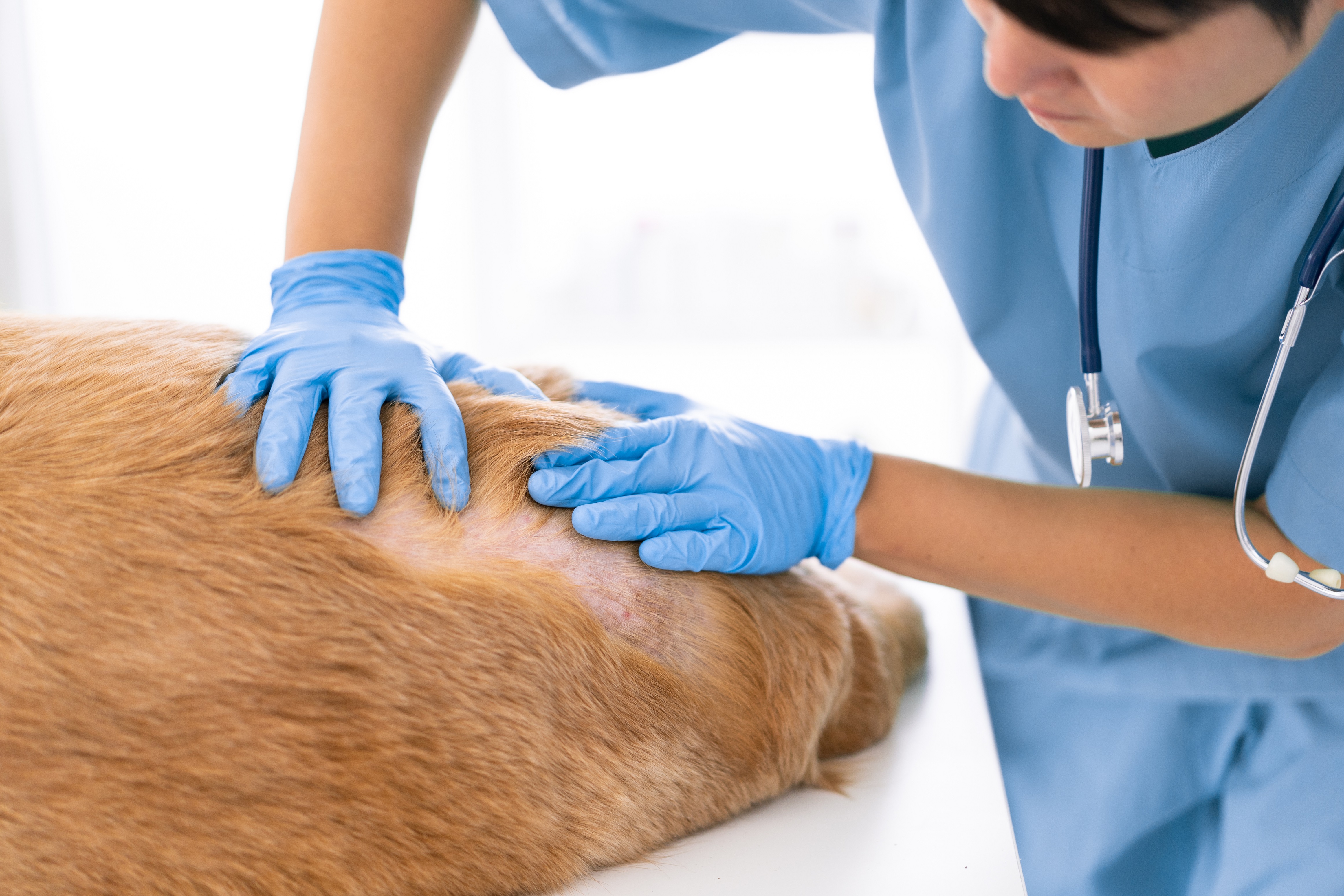This blog is the third in a series of three instalments, preceeded by Part 1 (Ethyology & Pathogenesis of the infection) and Part 2 (Clinical overview & Diagnosis).
The successful resolution of pyoderma means the disappearance of symptoms and the elimination of the risk of relapses. Since the majority of these infections are secondary in origin, the identification and correction of the primary cause, most frequently of an allergic nature, is essential for a definitive cure.
All guidelines regarding the treatment of superficial pyoderma recommend topical treatment with shampoos and/or antimicrobial sprays or solutions or mousse. The efficacy of topical therapy has been shown to be the same as the administration of an oral antibiotic, both in terms of therapeutic success and in terms of the time it takes to obtain a relief of symptoms. It is very important to avoid the use of systemic antibiotics as much as possible, as these promote the development of antibiotic resistance by bacteria, not only in the skin, but also in other body districts, such as the enteric. The use of local antiseptic therapy not only prevents this, but is also able to eliminate any bacteria already resistant to antibiotics much better than the antibiotics themselves.
The length of therapy should not be less than three weeks, or one week after complete clinical recovery. The contact time of the product with the patient must be at least 10-15 minutes, to allow its active ingredients to be active. The owner should therefore be instructed to check with a watch that the contact time has been enough.
The cooperation of the owner is essential, and the success of the topical treatment mostly depends on this. The most important factors here are the cost of the therapy, the frequency of application, the difficulty of the application, the temperament of the animal, the packaging and the scent of the product. It is important to explain to the owner that the use of topical therapy, although more difficult than the administration of a systemic antibiotic, is in the interest of the health of their pet: they are most likely to be happy to accept the administration of shampoos and sprays to their pets.
It is important to know how to choose the right product, to know its active ingredients, vehicles, indications and contraindications, compatibility, incompatibility, mechanism of action and duration of effect. All products for topical use are composed of one or more active ingredients and their carrier substances.
In order to be effective, the active ingredient must pass from the vehicle to the skin, and thus pass through the stratum corneum. This represents one of the most difficult barriers to cross, and the diffusion of the active ingredient into it depends on many factors, such as its water- or fat-solubility, vehicle in which it has been formulated, the level of hydration of the epidermis and the integrity of the stratum corneum.
Vehicles generally contain substances that determine its pH, stabilise the active ingredient, prolong its effect, facilitate its penetration into the epidermis and make the product cosmetically pleasing (fragrances, colourants). The choice of product formulation depends on the kind of lesions to be treated, their localization and distribution. The most commonly used formulations for pyoderma are shampoos, sprays and mousses.
Shampoo
Shampoos are the most commonly used form of topical treatment for pyoderma. The massage of the foam into the hair and the cleansing vehicles of shampoos help remove tissue debris, and promote better contact between the active ingredients and the skin.
How shampoo work
Shampoo contains organic surfactant compounds with a hydrophilic "head" to which a hydrophobic "tail" is attached (Pic. 8).

Picture 8 – Representation of surfactants. From top to bottom: nonionic, anionic, cationic, amphoteric
The hydrophilic head, due to its chemical and physical characteristics, is akin to water molecules, while the hydrophobic tail is akin to oil molecules. When surfactant
molecules come in contact with water, they tend to associate to form aggregates called micelles. The presence of micelles is necessary for the detergent action, in fact
they are able to absorb or "solubilize" the oily materials in the dirt, through the hydrophobic chains of the micellar "core." The cleansing action can be schematized in three successive phases (Pic. 9):
Adsorption: grease (dirt) by exploiting the affinity of the lipophilic chain of surfactant for these fats is coated by a monomolecular layer of surfactant oriented with the
hydrophilic groups outward.
Charge transfer: the substrate on which the dirt is located, that is, the keratin of the skin and hair in contact with water, has a negative charge, while the dirt mostly has a positive charge.

Surfactant molecules insert themselves between substrate and dirt and completely envelop the greasy particles imparting a negative electrical charge to the dirt equal to that of the substrate.
Removal and solubilization: the mutual repulsion between two negative charges allows partial detachment of the particle from the substrate: once the partial
detachment has taken place, the subsequent removal of the dirt from the substrate will be accomplished by the mechanical action of water.
Active ingredients of antimicrobial shampoos
In addition to surfactants that cleanse the skin and coat, antimicrobial active ingredients capable of inactivating microorganisms are also present in medicated shampoos. The active ingredients used in pyoderma are many, and include benzoyl peroxide, ethyl lactate, chlorhexidine, iodopovidone, and sulfur.
Benzoyl peroxide is a powerful oxidizing agent with broad-spectrum antibacterial effect and keratolytic, and strongly degreasing properties, making it particularly
useful in cases of excessive sebum production (oily seborrhea) and in the presence of comedones. The disadvantages of benzoyl peroxide are unfortunately numerous. It can discolor the coat of dark animals or the owner's clothes, can excessively dry the animal's skin, and can cause contact dermatitis and irritation, both to the animal and the owner. Therefore, it is recommended not to use it in animals with very inflamed or sensitive skin, to always apply it with gloves, and not to use formulations with a concentration higher than 2.5-3%.
Ethyl lactate at 10% is an antibacterial agent, and is well tolerated (better than benzoyl peroxide), has a less degreasing action and therefore dries the skin less. However, its residual effect is quite short.
Chlorhexidine is a disinfectant of the phenol family and has excellent and broad-spectrum effect against bacteria (except some Pseudomonas) and Malassezia yeasts. It is neither irritating nor sensitizing, is not inactivated by organic substances (pus, exudates), and has a long-lasting effect. It is generally found in products at a concentration of 0.5-4% and has the advantage of having the longest lasting residual effect among all topical antimicrobials tested.
Iodine compounds are among the oldest disinfectants used. Iodine tincture and Lugol's solution, while effective fungicides, bactericides, viricides and sporocides, are very irritating and sensitizing, especially in cats, and should not be used. New iodine-based compounds, the "iodophores," are less irritating and sensitizing, and iodopovidone is one of them. However, its bactericidal action and prophylaxis
of bacterial recolonization is less than that of other antimicrobials, and it can have a drying effect on the skin, be irritating in areas such as the scrotum and pinnae, and
slightly stain lighter-colored hairs. All these factors limit its use.
In Italy there is a shampoo based on 2% sulfur and 2% salicylic acid. Sulfur has antibacterial, antipruritic and keratoplastic action. Its antibacterial action comes from the formation of pentathionic acid and hydrogen sulfide. Sulfur has a keratolytic action synergistic with salicylic acid. The latter is keratolytic, keratoplastic, slightly
antipruritic and bacteriostatic due to its acidic pH. This shampoo is useful in case of superficial pyoderma accompanied by desquamation or dry seborrhea.
Proper application of shampoos
The active ingredients in medicated shampoos have a short contact time, because they are soon removed by rinsing. On the other hand, if product residues remain in
contact with the skin, because they are not rinsed properly, they can be very irritating to the animal, and aggravate already existing lesions. Therefore, it is very important
that the rinsing is conducted in the best way, to ensure successful topical therapy.
Before each bath, the animal's ears should be plugged with cotton balls to prevent water and shampoo from penetrating them. Only in the event that the ears also need to be treated, they will be left open, and can be watered when the rest of the animal is covered with foam. The animal must be wet completely, up to the skin, before applying shampoo. This can be especially difficult in thick-haired dogs such as the German Shepherd or Chow Chow.
Then shampoo should be applied, preferably already diluted in water and not in excessive amounts, and massaged into all areas to be treated for at least 10 to 15 minutes. It is important to ask the owner to actually look at the clock to check the time, because subjective evaluations are often inappropriate. Then the animal should be rinsed completely and for a long time, until the water runs off clear and foam-free. It is important to rinse well every area of the body, and especially the more difficult areas, such as the caudal areas of the thighs if the hair is very thick, the axilla, groins, tail, and interdigital areas. If necessary, the whole shampooing and rinsing operation will be repeated a second time. It is also advisable to add humectant conditioner to the water used for the last rinse and let it dry on the animal's coat. This will prevent excessive drying of the skin and coat.
Shampoos should be performed initially at least 1 or 2 times a week, and their frequency should be decreased as the animal's clinical status improves. Too frequent use, especially of benzoyl peroxide, would result in excessive drying of the coat and skin. In cases of superficial pyoderma, it is very useful to treat the lesions with disinfectant sprays or mousses on days when shampooing is not applied.
In the case of recurrent pyoderma, the underlying cause of which has not been identified, frequent shampoos also gain prophylactic importance to decrease the occurrence, frequency, or severity of a possible relapse. Disinfecting shampoos able of removing infectious forms of Giardia present on the coat of affected animals are also able of preventing re-infestations and forms of Giardia zoonosis.
 Global English
Global English

 UK
UK




